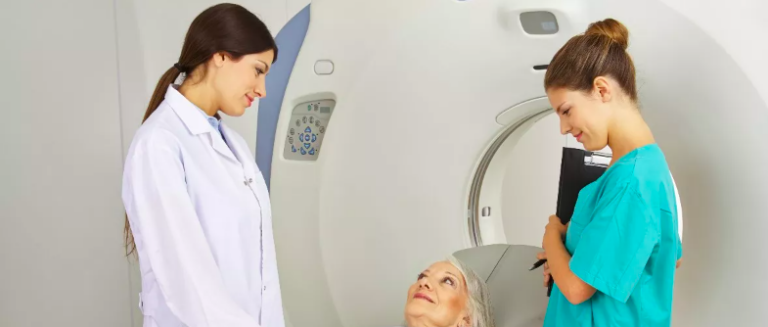Breast MRI, or Magnetic Resonance Mammography, has been internationally established as the most sensitive examination for diagnosing breast cancer and is also the most reliable method for its exclusion.
Since it is performed in a magnetic resonance machine, it does not use ionizing radiation and can therefore be safely conducted multiple times as needed. The procedure requires the intravenous administration of a contrast agent that is safe and rarely causes side effects.
The diagnostic accuracy of the examination depends on the equipment (a modern magnetic resonance machine with a strength of at least 1.5 Tesla), the correct selection of patients and timing, the technical quality of the examination, the application of specific diagnostic criteria, and the experience of the radiologist.
Breast MRI is scheduled after evaluating the patient’s history and the findings from a recent high-quality mammogram or ultrasound to confirm that there is an indication for its performance.
Women of reproductive age should undergo Breast MRI between the 7th and 14th days of their menstrual cycle to reduce the likelihood of false-positive results. For postmenopausal women receiving hormone replacement therapy, it is better to discontinue the treatment for 6-8 weeks before the examination for the same reason.
As with any examination scheduled in the magnetic resonance machine, possible contraindications should be ruled out, such as the presence of incompatible cardiac pacemakers and metallic foreign bodies in vital areas of the body. It is also essential to assess for claustrophobia, as successful Breast MRI requires full cooperation, calmness, and stillness from the patient. If necessary, the examination can be performed under mild sedation.
Breast MRI is recommended by the most reputable medical authorities as a first-line examination for annual preventive screening in women at high risk of developing breast cancer. This group includes women from families with multiple cases of breast cancer or other types of cancer, women with confirmed genetic mutations that increase the likelihood of breast cancer, and women who underwent chest radiation therapy at a young age.
This examination is highly useful and effective in clarifying the nature of ambiguous findings in the breast identified through mammography and ultrasound, particularly in women who have already undergone treatments for breast cancer, such as surgery or radiation therapy. Additionally, it is now recommended as a supplementary preventive examination every 1-2 years for women with dense breasts, which are challenging to evaluate reliably with mammography.
In recent decades, the role of Breast MRI has solidified in the accurate assessment of the breasts in women with a recent breast cancer diagnosis, to determine the most suitable treatment for each case. This examination can accurately exclude or reveal other cancerous lesions in the breast that were not identified in mammography and ultrasound. In cases where chemotherapy is chosen as the initial treatment, Breast MRI is the most reliable examination for evaluating its effectiveness.
For women who have undergone breast augmentation with silicone implants, Breast MRI is the most appropriate examination to assess the integrity of the implants and detect ruptures or other potential complications.
If Breast MRI reveals suspicious lesions for cancer that are not recognized retrospectively in mammography and ultrasound, techniques for percutaneous biopsy and marking of these lesions are available under the guidance of this examination to achieve reliable identification.
October is dedicated to raising awareness about breast cancer; let’s highlight the importance of prevention and early diagnosis! Take care of your body because health starts with you!
Ask me anything
Explore related questions





